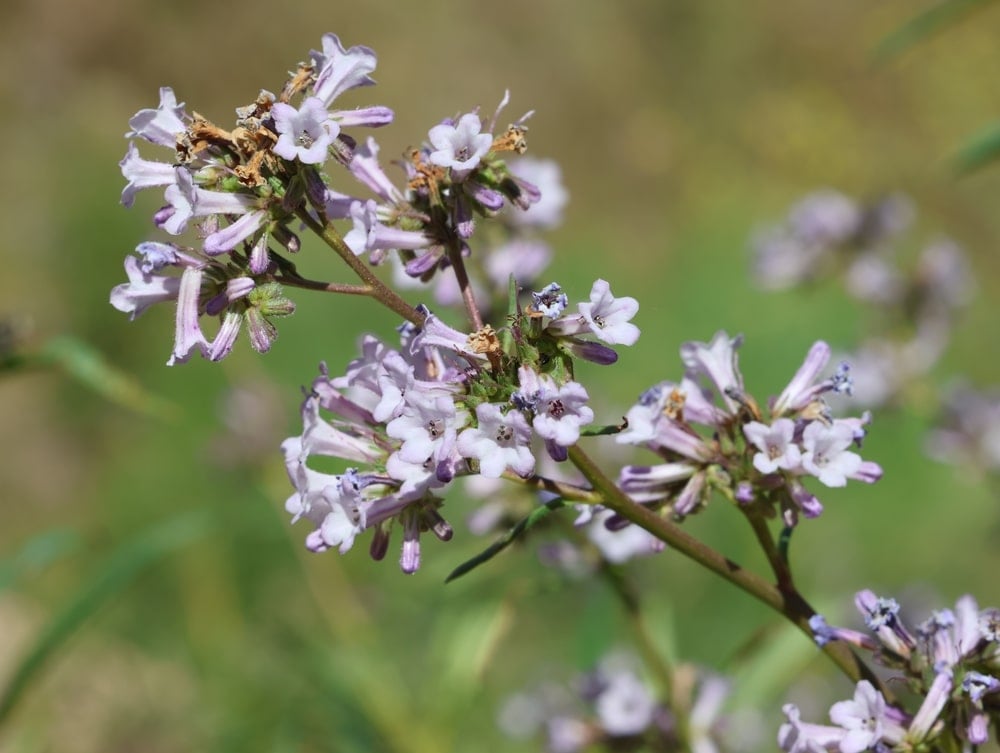
Yerba Santa, scientifically known as Eriodictyon californicum, is a remarkable shrub native to the chaparral and woodland regions of California, Oregon, and parts of the southwestern United States. Often referred to as the “holy herb” or “holy weed,” this aromatic plant has a rich history of use by Native Americans and modern herbalists alike for its medicinal properties and distinctive flavor.
Botanical Overview of Yerba Santa
Belonging to the genus Eriodictyon within the borage family (Boraginaceae), Yerba Santa is characterized by its woody stems and leathery leaves that are often varnished with a sticky resin. The plant typically grows up to 3 to 8 feet tall and produces bell-shaped flowers ranging in color from white to lavender or purple during the spring and summer months. The leathery leaves, which can be fresh or dried, emit a sweet, aromatic scent and carry a slightly bitter taste due to the resin content.
Native Habitat and Distribution
Yerba Santa is a plant native primarily to California but also found in Oregon and northern Mexico. It thrives in chaparral and woodland ecosystems, often growing in disturbed soils, such as areas affected by fire or construction. Its seeds are adapted to germinate after such disturbances, helping it to stabilize the land and prevent erosion. This resilient shrub is a vital part of the native flora and plays a role in supporting local ecosystems, including bees and butterflies attracted to its flowers.
Traditional and Medicinal Uses
Known as the “holy weed” by Spanish settlers, who adopted the name from Native American tribes, California Yerba Santa has been traditionally used as a medicinal herb to treat respiratory ailments such as colds, coughs, asthma, and bronchial congestion. The leaves, whether fresh or dried, are commonly brewed into a tea or made into a syrup to provide relief for sore throats and other respiratory issues. Herbalists also use Yerba Santa for its anti-inflammatory effects and as a natural expectorant.
Chemical Composition and Health Benefits
Yerba Santa contains a complex blend of flavonoids, volatile oils, and resins that contribute to its medicinal qualities. Notably, compounds such as sterubin and eriodictyol have been studied for their neuroprotective, anti-inflammatory, and antioxidant properties. These constituents make Yerba Santa valuable not only for respiratory support but also for general immune health and as part of natural healing regimens.
Cultivation and Harvesting
The Yerba Santa plant is relatively easy to cultivate in gardens that mimic its native environment, preferring well-drained soil and full sun exposure. Gardeners appreciate it for its aromatic foliage and attractive flowers. Harvesting typically occurs in the spring when the fresh leaves and flowers are most potent. Leaves can be collected fresh for immediate use or dried carefully to preserve their resinous qualities for teas and tinctures.
Yerba Santa in Modern Herbalism
Modern herbalists continue to value Yerba Santa for its versatility and efficacy. It is often combined with other herbs to enhance its benefits, especially in formulations aimed at respiratory health. Liquid tinctures made from Yerba Santa offer a concentrated form of its active compounds, providing quick and effective relief. Additionally, the plant is used in various products, including herbal teas, syrups, and salves.
Cultural Significance and Ecological Role
Beyond its medicinal uses, Yerba Santa holds cultural importance among indigenous peoples of California, who used it in ceremonies and daily life. The plant’s aromatic smoke was traditionally employed in smudging rituals for spiritual cleansing and protection. Ecologically, Yerba Santa supports pollinators like bees and butterflies, contributing to the health of native plant communities.
Conclusion
The Yerba Santa plant is a treasured member of the medicinal plants native to California and the broader western United States. Its unique combination of aromatic, therapeutic, and ecological qualities makes it a valuable addition to gardens, herbal medicine cabinets, and cultural heritage. Whether known as mountain balm, gum plant, or holy herb, Yerba Santa continues to offer healing and beauty to those who seek it.
Note to readers: When using Yerba Santa medicinally, consult with a qualified herbalist or healthcare provider to ensure safe and appropriate use.
References
- Duke, J. A. (2002). Handbook of Medicinal Herbs (2nd ed.). CRC Press.
- Maher, P., Fischer, W., Liang, Z., & Currais, A. (2020). The value of herbarium collections to the discovery of novel treatments for Alzheimer’s disease, a case made with the genus Eriodictyon. Frontiers in Pharmacology, 11, 208. https://doi.org/10.3389/fphar.2020.00208
- Moore, M. (1993). Medicinal Plants of the Pacific West. Museum of New Mexico Press.
- Slatterly, J. (2016). Sonoran Plant Profile: Yerba Santa. Retrieved from https://www.fs.usda.gov/wildflowers/plant-of-the-week/eriodictyon_sp.shtml
- WishGarden Herbs. (n.d.). Benefits of Yerba Santa: The Aromatic Wonder. Retrieved from https://www.wishgardenherbs.com/blogs/wishgarden/yerba-santa
- Drugs.com. (2025). Yerba Santa Uses, Benefits & Dosage. Retrieved from https://www.drugs.com/npp/yerba-santa.html
Masterful Display
Each and everyone of our products are deeply considered, labored over, and improved upon time and time again. We invite you to experience the difference of our carefully crafted small batches of herbal support items. Whether it be our tea line, produced for a delightful experience, or our tincture blends and extracts, we have what you need.

